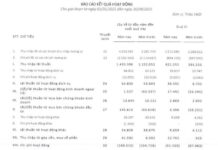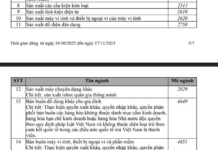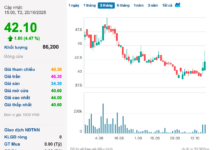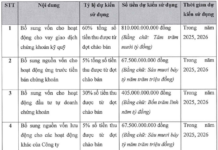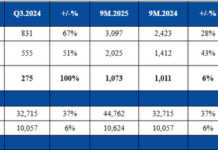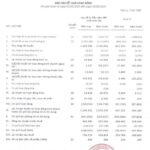According to Dr. Phung Thai Minh Trang, Head of Finance and Banking at Hoa Sen University, many investors are looking to capitalize on their successes from last year’s bargain hunting. However, investors need to recognize that the prices of various assets have already increased significantly, with some even surpassing multi-year expectations. Therefore, it is crucial to exercise utmost caution when making investment decisions.

Dr. Phung Thai Minh Trang, Head of Finance and Banking at Hoa Sen University
|
As of now, gold prices have surpassed the 90 million VND per tael mark. Compared to the end of last year, gold buyers are profiting by approximately 13.7 million VND per tael (over 18%). Typically, this precious metal only grows by 3-5% annually.
Dr. Trang mentions that many other countries are experiencing a similar surge in gold prices. Notably, young investors, who usually favor assets with high and quick profit potential, are now turning to gold. This shift is mainly due to investors’ concerns about an early interest rate cut by the Fed and a return to a new cycle of monetary easing. As a result, they seek assets that serve as a hedge against inflation. Additionally, global geopolitical conflicts are significantly influencing investors’ psychology, with some opting to buy gold as a defensive strategy.
“Regarding domestic gold prices, Vietnam has stopped importing gold for over a decade and maintained a monopoly on gold bars for quite some time, making the situation more complex. Consequently, local gold prices are at least 16 million VND per tael higher than global prices. While this asset has yielded considerable profits for investors since the beginning of the year, it’s important to remember that asset prices typically reflect information beforehand. Given that gold has already experienced a substantial growth spurt, surpassing multi-year expectations, I believe investors need not rush into frequent transactions in this asset class. Moreover, the buy price of gold will be lower than the selling price offered by trading points, and this gap has widened significantly since the beginning of the year. Entering the market at this stage may put investors at a disadvantage compared to previous years,” assesses Dr. Phung Thai Minh Trang.
Turning to the stock market, although there was a sharp correction in mid-April, the VN-Index has since recovered to near pre-crash levels, hovering around 1,275 points. Dr. Trang advises that this is not the time for investors to continue aggressive trading.
“Investors who were willing to take the risk of bottom-fishing in late April have already earned a substantial risk premium. If these individuals have a short-term outlook, they may have started considering profit-taking. For smart money, most of which entered the market in late April, the current valuation range is not yet attractive enough for further investment. In reality, despite the correction in April, the market has grown by over 12% year-to-date. This implies that the advantage still lies with investors who previously held stocks. Consequently, the market will struggle to advance significantly in a short period without additional supportive factors. Therefore, the market needs appropriate discounts to facilitate balanced buying and selling and sustain its upward trajectory,” she adds.
|
VN-Index Performance Since the Beginning of the Year
|
Regarding the real estate investment channel, Dr. Trang mentions that in just the first five months of the year, apartment and condo prices (known for their high liquidity) have increased by approximately 7-10%. Annually, the yield of this asset class typically ranges from 10-14%, including rental income. The product segmentation is also evident due to the previously low base price. However, as this advantage fades, investors should exercise caution when selecting these assets.
The expert from Hoa Sen University further informs that deposit interest rates have also inched up by about 2% in banks due to concerns about the State Bank raising interest rates to curb currency devaluation. However, with US inflation data on track and the DXY dollar index cooling down, the Fed may soon cut interest rates. Additionally, the season for FDI enterprises to repatriate profits has passed, reducing pressure on exchange rates. At the same time, the economy still needs monetary policy support for recovery. Therefore, deposit interest rates will likely remain stable to foster growth.







